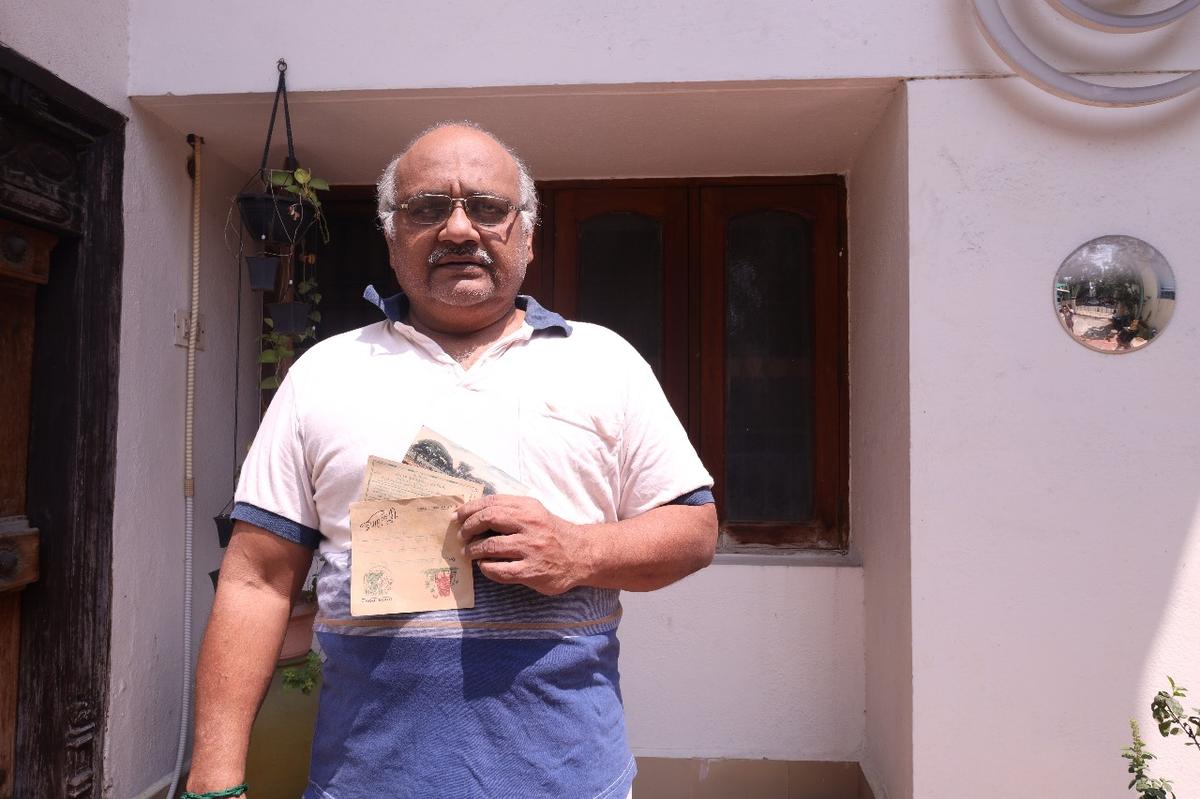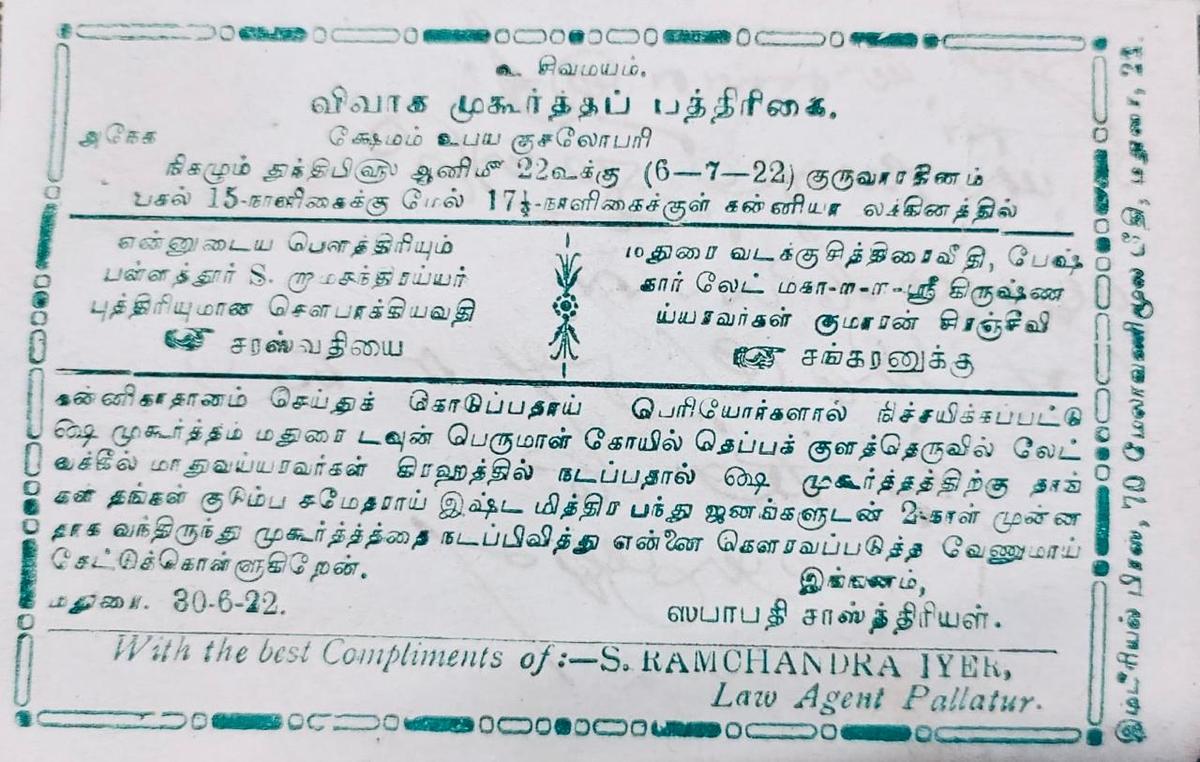
Ramaswamy Rangachari with his postal savings scheme passbook.
In this age of instant messaging, the soft jingle of the postman’s cycle bell might be growing feebler. Ironically, in some minds though, that jingle only keeps gaining in intensity, almost achieving the resonance of a gong. That is the power of memories, enhancing the past, sometimes to distorted proportions. But nostalgia alone does not buttress postal services. Belief in its future does that too. As part of Postal Week, presenting two voices, one on the nostalgic value of postcards and postal services and the other on its continuing relevance in this digital world.
Ramaswamy Rangachari, a resident of Sholinganallur, is a much recognised face at the local post office. When he finds the services at the post office below par, he does not flinch from sending out a missive to the powers-that-be. His views on how the Sholinganallur post office could up its game have been published in these pages. If one delved into 76-year-old Ramaswamy’s education and career, this obsession with postal services would seem out of the ordinary. A retired investment banker, urbane, much-travelled across the globe, lived abroad, and more importantly, tech-savvy, being an admin in a hyperlocal community group or two, Ramaswamy is a patron of India’s postal services.
“My mother used to have a savings account and some fixed deposits in the Mylapore Post Office,” recalls Ramaswamy. “After I came back to India, I have been banking with the Sholinganallur Post Office.” For him, the post office is not merely about monetary transactions. As a trustee of an NGO supporting rural education, he personally mails receipts, scholarships, and teacher salaries through Speed Post every week. There is an air of officialdom and formality about documents sent through physical mail that cannot be matched by digital mail. And that is one of the areas where the humble postman on the cycle will not lose his relevance.
“I have to send receipts of donations by Speed Post at least once a week. Apart from that, I have my own deposits and other things to handle,” says Ramaswamy.
The unwritten element in postcards: memories
Prabhakar V, a resident of Anna Nagar, collects memories in various forms — tram tickets, coins, books, everyday objects from bygone eras and postcards. Many of his postcards have come from Moore Market, exhibitions and online forums where collectors traded living fragments of the past. Among his most treasured postcards are two wedding invitations printed on postcards. The first, from 1922, was purchased at Moore Market. Back then, a postcard as a wedding invite was a novelty — surely, if someone attempted it, it would be a novelty even now, more so than it was in the past. There is no extra embellishment but just the message itself, printed in neat teal-green ink within a modest floral border. Below, in precise Tamil, the details of the wedding are laid out: the date, the hour, the families involved, and an invitation extended with grace and formality.

Prabhakar V with two old wedding invites both printed on postcards.
The second, from 1949, carries an upside-down post office cancellation, a small quirk that fascinates him.

A wedding invitation printed on a postcard in 1922.
“Something different,” he says. “Something you do not notice until you look twice.” This 1949 wedding invitation seems to reflect a turning point between tradition and modernity in printed communication. Neatly composed in Tamil, the details are presented with order and restraint: the Tamil month, the exact time of the auspicious hour, and the names of the bride and groom written with measured respect. A small yet striking note appears at the bottom in both Tamil and English, “Presents avoided.”
Published – October 11, 2025 10:45 pm IST
#Postal #Week #postmans #cycle #bell #stays #heard #official #communication #notes #nostalgia


